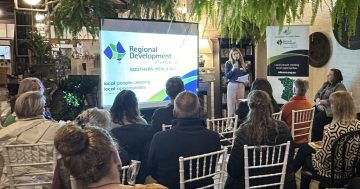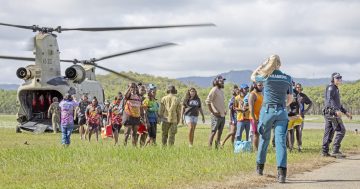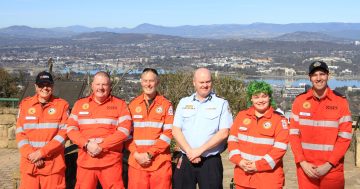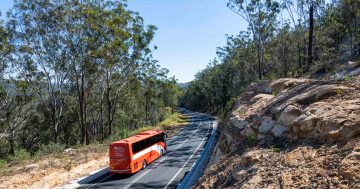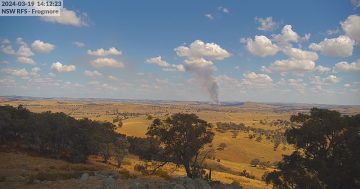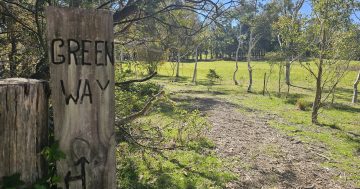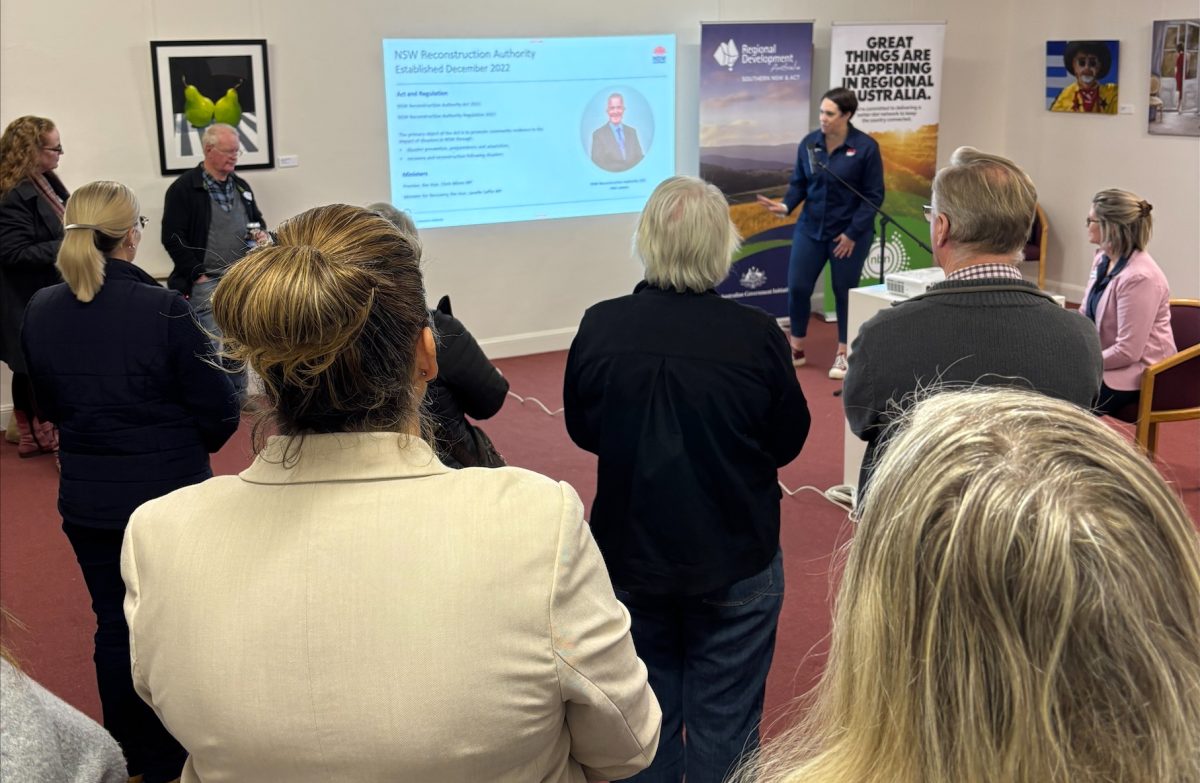
RDASNA Regional Connect events will come to LGAs from Hilltops to the Bega Valley, to help regional communities prepare for disaster. Photo: RDASNA.
Disasters don’t send save-the-date cards — all across Southeast NSW and ACT, they’re hitting harder and more often, with little warning.
Over the years, severe storms, floods, bushfires and other natural disasters have left businesses, groups and communities at a loss as to how to pick up the pieces.
This needn’t be the case, according to Olivia West.
Over the coming months, the CEO of Regional Development Australia NSW and ACT (RDASNA) will oversee the organisation’s “Regional Connect” roadshow, ensuring regional communities under nine LGAs in their jurisdiction know exactly what resources are at their disposal, where to find them and how to use them.
She says there’s a clear appetite for practical, localised information.
“We’ve already had our first event in the Crookwell in Upper Lachlan LGA, and people were very engaged,” she says.
“I think after everything regional communities have faced over recent years, talking about ‘resilience’ is the last thing anyone wants to do. But really, what we’re looking to do is provide regional communities with the information they need to see hazards coming, and to take control when things take a turn, so they’re not waiting on the government.
“Being in the dark or feeling helpless is the worst position to be in.”
Each event is tailored to the LGA, providing local context including relevant climate projections, vulnerabilities and hazards. This could encompass everything from an emphasis on coastal inundation to drought or bushfire risk mapping, but also issues that impact everyone — from pandemics to the economic landscape.
“If we can’t help on the night, we’ll connect them afterwards or online,” Olivia says.
A centrepiece of the roadshow is the South East NSW Resilience Blueprint — a framework developed through consultation with more than 2000 people, including residents, councils, emergency services and government agencies.
This tool was prepared by the Canberra Region Joint Organisation of Councils with Commonwealth and NSW Government funding.
It offers step-by-step guidance on preparing for, responding to and recovering from disasters, along with tools for anticipating change before it arrives.
“It contains so much useful information,” Olivia says. “It can show you your bushfire or coastal inundation risk levels, explain insurability issues and point you straight to the right agencies. People are often surprised these resources exist.”
Audiences will also learn about RDASNA’s role and other key resources they may not fully understand or even know exist.
“We often hear, ‘The government should do this’ or ‘I wish these resources existed’ and quite often our response is — ‘Actually, they already do!'” Olivia says.
“A lot of people don’t even know there’s such a thing as a Reconstruction Authority, whose job it is to piece everyone back together after a major disaster.”
Among the presenters is Heidi Stratford, Director of Illawarra South East Regional Delivery, Preparedness and Recovery at the NSW Reconstruction Authority.
“We’re relatively new in the public eye, established after the 2022 NSW Flood Inquiry,” she says. “Many people don’t know our role or what resources we can bring to bear.”
The Authority works across four pillars — mitigation, preparedness, adaptation and recovery — helping businesses and communities align their own resilience planning.
At the Regional Connect events, the team walks audiences through those pillars, sharing case studies and practical steps that can be put in place straight away. This includes resources from other agencies, such as the NSW Small Business Commissioner, and hands-on guidance through “Get Ready” programs.
“We talk about understanding national and local warning systems, getting to know your emergency apps, what to pack in a kit, and how to make a plan,” Heidi says. “For businesses, we show how to prepare in five simple steps — with a big focus on business continuity.”
It’s often the small, overlooked details that cause the biggest disruption, she says, such as the impact on phone connectivity when the power goes out, or keeping cash on hand in case EFTPOS goes down.
“Disasters don’t just knock out power; they can stop your ability to communicate or take payments,” she says.
While a lot of disaster advice focuses on what to do during an emergency, Heidi says the real priority is early action.
“Disasters are changing in nature, and this is about thinking ahead — because once you’re in it, it’s really challenging,” she says. “The information is there, the support is there. We just need people to know about it.”
For more information on Regional Connect events, visit RDASNA.












